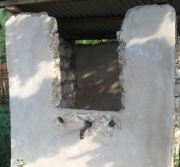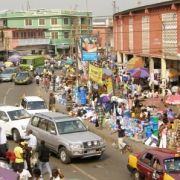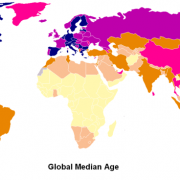Mobiles: Sustaining & Coordinating Aid Distribution
Amartya Sen famously once observed that famines rarely occur in democratic or even relatively free societies, rather from inequalities built into the societal mechanisms of food distribution. The current famine declared by the U.N. in Southern Somalia, exemplifies his case and point.
New mobile technologies and ICTs in aid projects, however, can be used to streamline the coordination between aid organizations on the ground, populations desperate for aid delivery, and those funding the projects abroad—and make them more sustainable.
As Charles Kenny points out, the modern expansion of international markets and improved international assistance have drastically reduced the probability of famines solely resulting from weak governance.
Alternatively, the government—or those in charge—must deliberately choose to deprive their people of food and, “…actively exercise the power to take food from producers who need it or deny food assistance to victims,” Kenny writes in Foreign Policy.
The political atmosphere within the two regions of Southern Somalia is a huge factor towards the most recent accumulation of mass malnutrition and starvation.
Lacking a sovereign state, citizens must rely on the governance provided by the decentralized al Shabab—who blames food aid for creating dependency—which does little to ensure access to food, preventing malnutrition, or improving livelihoods of the population.
In February 2010, the militant group ousted the World Food Program (WFP), followed by their expulsion of three other aid agencies, where they were accused of spreading Christian propaganda.
Al Shabab removed the food aid earlier this month, declaring that agencies without hidden agendas were free to operate in their areas. Later, they announced that expelled agencies, namely WFP, remained banned.
Despite these efforts of dissuasion, WFP airlifted 10 tons of food to Southern Somalia last Wednesday. Mobile technologies can used to track this aid to ensure that it is kept out of the hands of al-Shabaab and into the hands of the malnourished.
Ensuring that they honor their word and delivering aid are two battles to overcome, encouraging harmony for further aid distribution is another.
If al-Shabab upholds their promise to allow food aid in the upcoming months, there should be coordination to make these programs and projects happen efficiently and sustainably—between Southern Somalia’s civil society, the government, and aid agencies who hold the resources.
Aid agencies should capitalize on ICTs to enhance the collaborative effort between organizations and individuals with eyes on the ground, and those pulling the funding strings up in Washington.
Edward Carr who works in famine response for USAID on the ground in the Horn of Africa, says,
…we are going to have to use our considerable science and technology capacity to really explore the potential of mobile communications as a source of rapidly-updated, geolocatable information about conditions on the ground to which people are responding with their livelihoods strategies
Although this new way of collecting information for benefit incidence analysis is useful for tracking who each dollar benefits, it is only resourceful in the long-term if put into a local social context.
Who is the most impacted, but most importantly, why- is what truly matters in the long run.









































